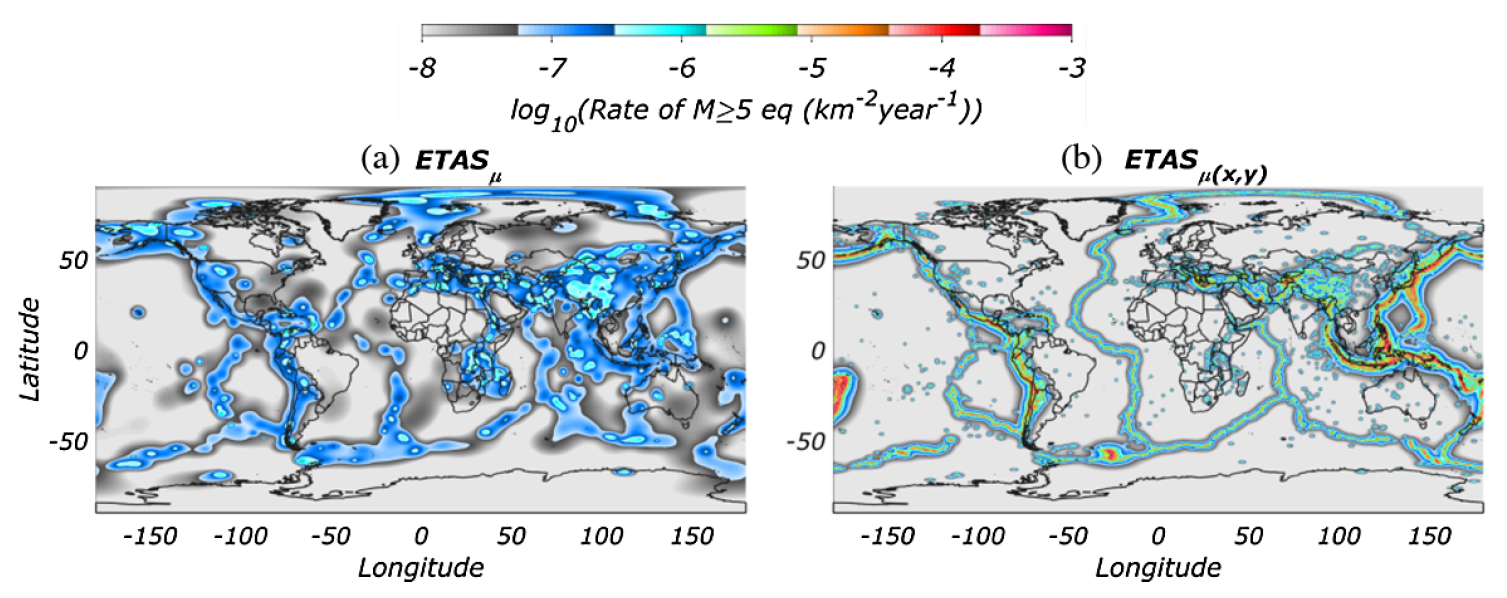Details
SUSTech’s Didier Sornette’s research group published a highlighted article on seismic activity
2021 / 06 / 10
Prof. Didier Sornette and his group published an article, titled “Is Seismicity Operating at a Critical Point?” in Physical Review Letters. The paper is selected as one of the highlighted articles.

Figure 1. Spatial density of the earthquakes identified as background events by the ETASμ and ETASμ(x,y) models for the global catalog.
Seismicity and faulting within the Earth’s crust are characterized by many scaling laws that are usually interpreted as qualifying the existence of underlying physical mechanisms associated with some kind of criticality in the sense of phase transitions. Using an augmented epidemic-type aftershock sequence (ETAS) model that accounts for the spatial variability of the background rates μ (x, y), they present a direct quantitative test of criticality. They calibrate the model to the ANSS catalog of the entire globe, the region around California, and the Geonet catalog for the region around New Zealand using an extended expectation-maximization (EM) algorithm including the determination of μ (x, y). They demonstrate that the criticality reported in previous studies is spurious and can be attributed to a systematic upward bias in the calibration of the branching ratio of the ETAS model, when not accounting correctly for spatial variability. They validate the version of the ETAS model that possesses a space varying background rate μ (x, y) by performing pseudoprospective forecasting tests. The noncriticality of seismicity has major implications for the prediction of large events.
Shyam Nandan from ETH Zurich is the first author, while Prof. Didier Sornette is the corresponding author of the article. Physical Review Letters is one of the top journals in Physics, with its position in JCR Q1 and impact factor registering 8.385 in 2019.
Reference:
Is Seismicity Operating at a Critical Point? Nandan S., Ram S. K., Ouillon G. and Sornette D. Physical Review Letters 126, 128501 (2021). https://doi.org/10.1103/PhysRevLett.126.128501

